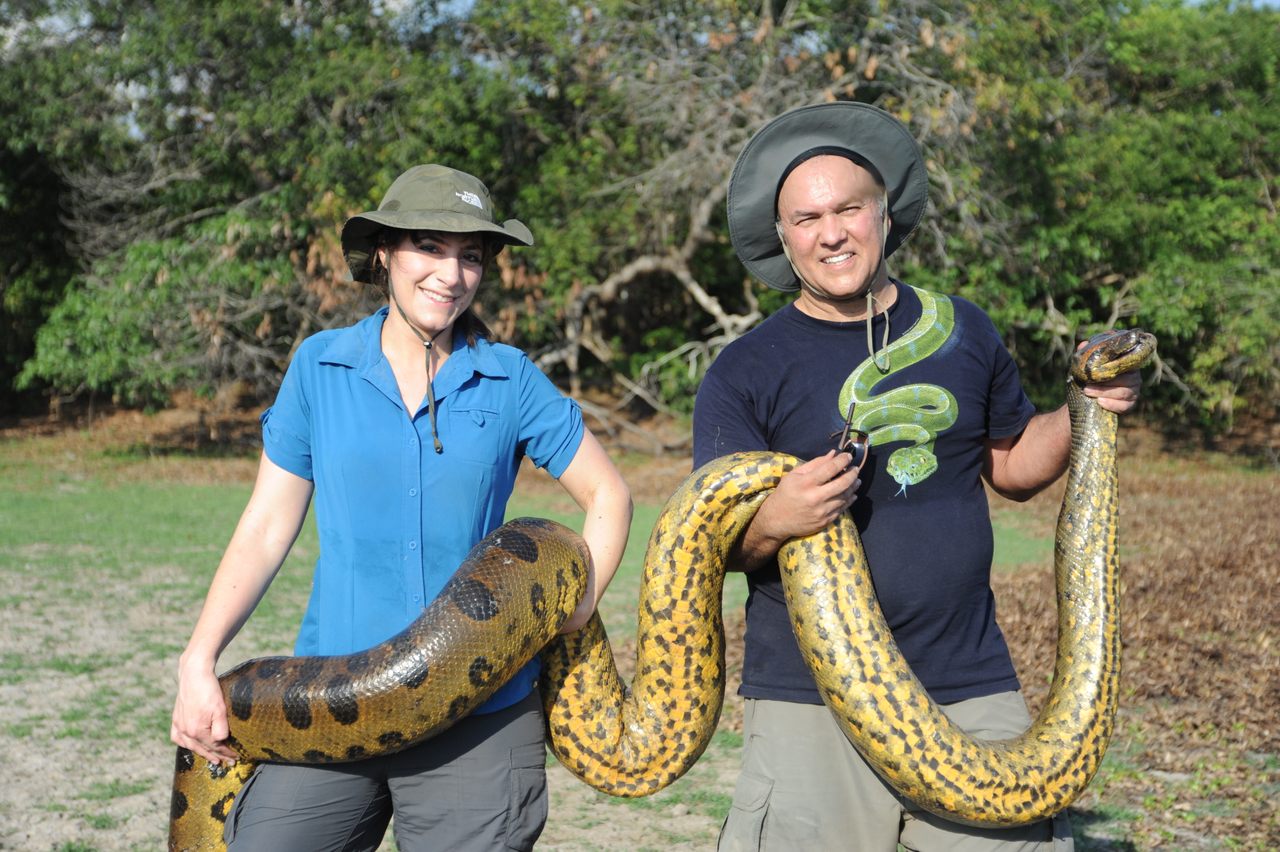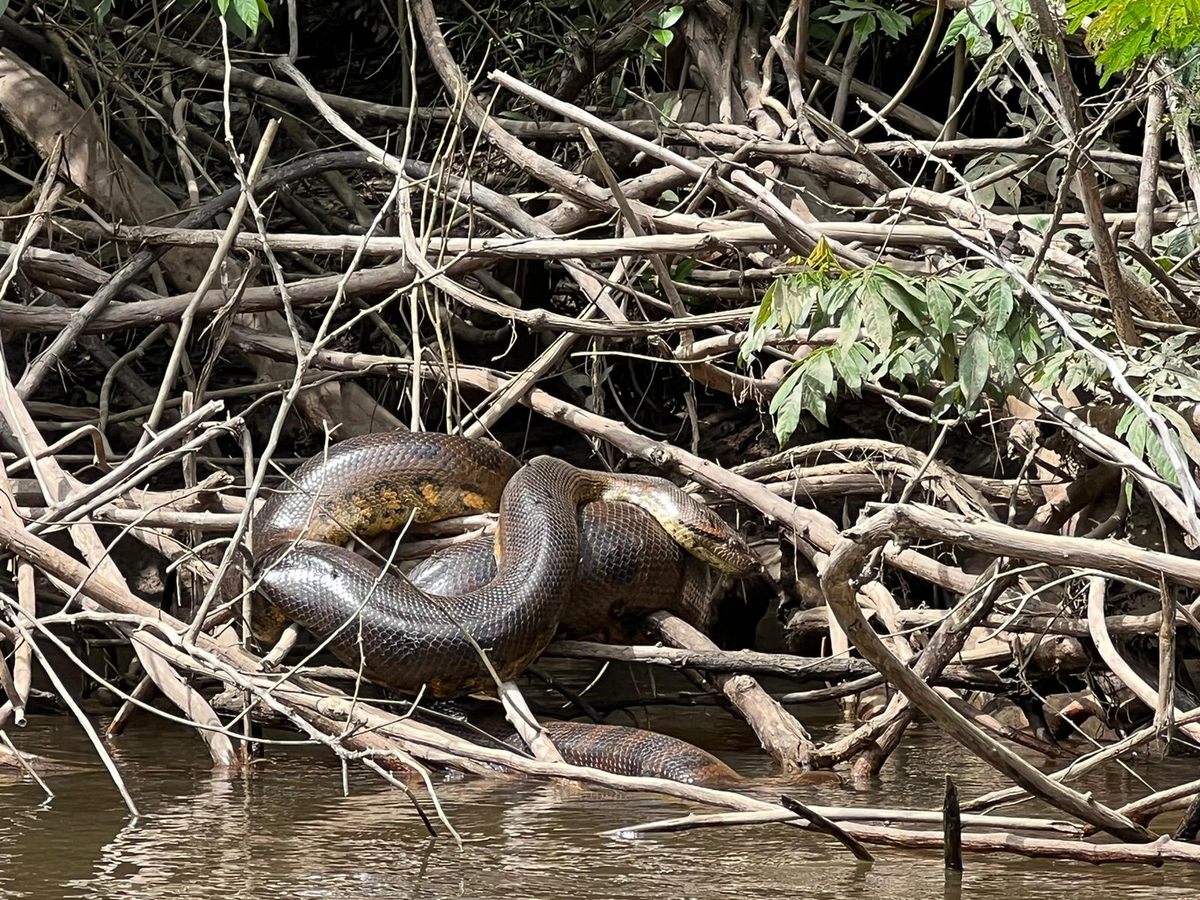by Olivia Young
atlasobscura.com
2/ 29/ 2024
The cloudy swamps & creeping streams that cover vast expanses of South America harbor some of the most hair-raising wildlife on the planet: poisonous frogs, electric eels, deadly mosquitos, & grinning caymans are just some. The Amazon is no place for someone who is spooked by things slimy, scaly, or hidden under murky water with only menacing eyes & nostrils visible. And yet that’s exactly what Jesús Rivas has looked for when he’s waded through the wetlands of South America over the past 32 years.Bryan Fry, co-author of the study & professor at the University of Queensland in Australia, says the key difference between the 2 populations is the geographic range. Years of field work & sampling revealed that specimens studied across the northern part of the green anaconda’s distribution were actually of a sister clade of E. murinus, which the researchers have named E. akayima. Whereas E. murinus (the southern green anaconda) can be found in Venezuela, Trinidad, Guyana, Suriname, & presumably Colombia, the second species E. akayima (the northern green anaconda) inhabits Peru, Bolivia, & Brazil. The species stick to their separate zones except for in French Guiana, & the study suggests that country “might be a contact zone for these 2 groups.”
In 2022, Rivas, Fry, a local Indigenous leader, actor Will Smith, & the crew of National Geographic’s “Pole to Pole” series embarked into the Waorani Territory of Ecuador & found evidence that the northern green anaconda is present there as well. That Indigenous leader, Penti Baihua, & his son, Marcelo Tepeña Baihua, are listed as co-authors on the study, & Will Smith is mentioned in the acknowledgements.
“One key factor that allowed us to make the publication now is new developments in our understanding of the history of South America,” Rivas says. He clarifies that the 2 species weren’t always so different. They likely diverged millions of years ago as a result of a ridge that rose & geographically separated the north & south. Now that there’s data to support that the green anaconda is made up of 2 claves, researchers can begin to work out the unique needs of each so these enormous snakes can continue slithering about & dominating the jungle.
“The discovery of a new species is always important,” Rivas says, “as it informs us better of the diversity we have—& may lose.”
* Article & photos from New Anaconda Species Has Been Officially Recognized - Atlas Obscura
Cute Critter Pics:





.jpeg)



No comments:
Post a Comment